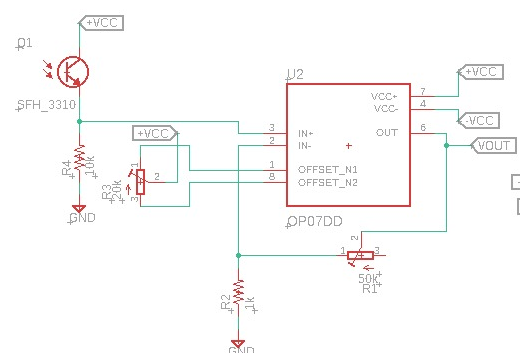I am building an amplifier for a phototransistor. It works well under normal lighting conditions.
In my application, the light is very dim and barely produce any readable output.
I tried to increase the feedback resistance potentiometer (R1 in the schematic) from 50k to 1M Ohm and it gave me the gain I wanted but the noise was very high and it was prone to EMI from a nearby power supply.
Would the noise decrease if I used two amplifiers in a multistage configuration?
- Op amp used: OP07DD
- Phototransistor: Osram SFH3310


